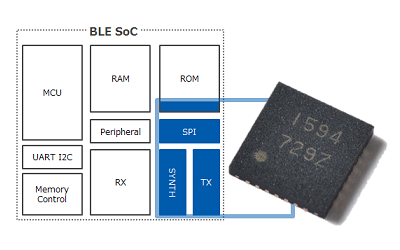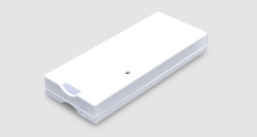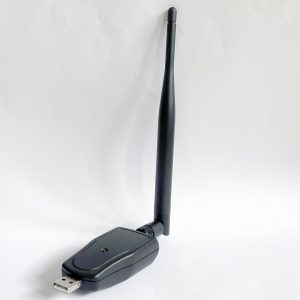All beacons are currently based on System on a Chip devices that are essentially small computers. While they are low power, it’s possible to create Bluetooth transmitters that are just electronics with no computing element and thus significantly reduce development effort (for the beacon manufacturer) and save substantial battery power for the end user.
Asahi Kasei Microdevices Corporation has announced the AK1594, a new Bluetooth® Low Energy Transmission IC. As there’s nothing to connect to via GATT, settings are configured via EEPROM programming and external switching rather than via an app. It consumes only 9.1uA when transmitting 0dBm every 1 sec.

Asahi Kasei Microdevices Corporation also mention a new beacon, from Houwa System Design, the Beacon Tag BLEAD® Series that will use the new chip and will be available from May 2018.

9.1uA is very low current for a beacon and is the order of magnitude a normal beacon uses when it isn’t advertising. This low power requirement will allow beacons to operate for effectively the physical rather than electrical life of the battery that’s probably of the order of a decade. It also allows new types of beacon to be created that use RF or solar energy harvesting.
Setup via EEPROM programming isn’t that easy or possible for end users and we expect initial beacons based on this technology will have fixed iBeacon advertising with only settings like power and advertising period set via switches.

